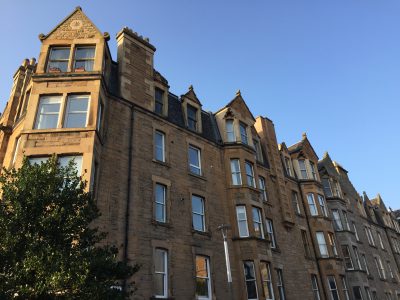What is or what is not the only or principal home of a tenant is a concept that has been with those operating in the private rented sector for many years. It is a concept that was carried forward into the Private Housing (Tenancies)(Scotland) Act 2016 (the 2016 Act). It also forms the basis of determining what licensing regime will apply to an anticipated tenancy and whether that will be landlord registration or short-term let licensing. It therefore remains central to what type of tenancy should be offered to someone looking to rent a property. The question of what is or what is not the only or principal home of a tenant is a matter of fact for a court or tribunal to determine in light of the evidence before it.
What is the test for whether a property is the only or principal home of a tenant?
This has been looked at again in the Upper Tribunal decision (looking at the question of permission to appeal) of Tan v Van Wyke UTS/AP/22/0028. The precise details of that case are not relevant, but the central argument was that the landlord claimed that they had entered into a “holiday let” agreement with the tenant and not a Private Residential Tenancy (PRT). As mentioned, one of the requirements for the creation of a PRT is that a tenant “occupies the property (or any part of it) as the tenant’s only or principal home” (section 1(1)(b) of the 2016 Act). The agreement was described and framed as such.
Central to the landlord’s argument was that, as the tenant did not have the right to reside in the UK, a tribunal could not conclude that the property was the only or principal home of the tenant. The Upper Tribunal indicated that the immigration status of the tenant was merely a factor to be taken into account and the test was whether the tenant has a “real, tangible and substantial connection with the property” so that it, rather than any other property, could be described as their only or principal home. That requires to be determined in light of the facts presented to and in front of the courts or tribunals.
In this case, the important factors that were relied upon to come to the conclusion that the property was the only or principal home of the tenant were that, the property had not been advertised as a holiday home, the tenant did not view the let as a holiday let, the tenant had purchased furniture for the property, paid council tax for the property from the date he moved in, had worked from the property, had given up his home in South Africa and his children were initially home schooled and then enrolled into a local school. The Upper Tribunal judge also made it clear that “a tenancy did not become a holiday let simply because one party wished to describe it as such”. Interestingly, in older cases that were decided under different legislation and for slightly different purposes, it has also been decided that a lack of “regular or habitual residence” in a property does not prevent a property being the only or principal home of a tenant.
What happens if the tenant’s circumstances change during a tenancy?
Whilst not dealt with in the case of Tan v Van Wyke (the decision was that the tenancy was a PRT from the outset), it is clear that a tenant’s circumstances can change from time to time. Unlike with tenancies under the Housing (Scotland) Act 1988, the 2016 Act specifically preserves the protected status of PRTs even where the let property ceases to be the only or principal home of a tenant (section 1(2) of the 2016) after the tenancy has started (although such a change in occupation could form grounds for recovery of possession utilizing ground 10 of schedule 5 of the 2016 Act). That being the case, there seems to be no reason why the opposite would not apply, in that a tenancy that started off legitimately as one outside the 2016 Act (for example a let for a work placement) could then become a PRT if the tenant’s circumstances changed. This is obviously unsatisfactory for landlords as they could face a situation where, through no fault of their own and without any intention to do so, a PRT is created by default at a date they may not easily be able to determine.
Bear in mind that, we now operate two separate licensing systems for more traditional landlords and for short-term lets with different duties in relation to deposits, tenancy documentation, as well as various criminal penalties for non-compliance, meaning a potential “minefield” for the unwary landlord so great care should be taken over the selection of suitable tenants.
If you require any further information or advice, please contact us.












